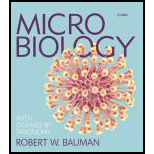
Concept explainers
1.
To determine:
The disease which is troubling Nate.
Case summary:
Histoplasma capsulatum (ascomycetes) is a
2.
To determine:
The drug taken by Nate.
Case summary:
Nate suffered from a type of lung infection called as pulmonary histoplasmosis. It is caused by fungus Histoplasma capsulatum. The doctor prescribed him a medicine that neither Nate and his father heard before.
3.
To determine:
How Nate contracts this disease.
Case summary:
Histoplasmosis is a type of fungal infection and his fungal spores are found in the soil, bat, and birds. The fungus Histoplasma capsulatum is a dimorphic ascomycete that causes severe lung infections.
4.
To determine:
Is Nate contagious to any of his friends in Troop 138.
Case summary:
Nate went on adventure boys scout troop 138. They did hiking, climbing, backpacking and mountaineering and they also spent time in a cave. In that cave, millions of bats were also present. They explored, scrambled, and crawled whole night. The fungal spores of Histoplasma capsulatum are found in birds and bats dropping and also in the affected soil.
5.
To determine:
Is it possible that other teenagers from the troop are infected.
Case summary:
Nate went on adventure boys scout troop 138. Nate get affected from a type of lung infection called as pulmonary histoplasmosis. It is caused by fungus Histoplasma capsulatum.
6.
To determine:
Is there any possibility that other troop members are diseased.
Case summary:
Nate went on adventure boys scout troop 138. Nate get affected from a type of lung infection called as pulmonary histoplasmosis. It is caused by fungus Histoplasma capsulatum.
Want to see the full answer?
Check out a sample textbook solution
Chapter 22 Solutions
Microbiology with Diseases by Taxonomy (5th Edition)
- please fill in the empty sports, thank you!arrow_forwardIn one paragraph show how atoms and they're structure are related to the structure of dna and proteins. Talk about what atoms are. what they're made of, why chemical bonding is important to DNA?arrow_forwardWhat are the structure and properties of atoms and chemical bonds (especially how they relate to DNA and proteins).arrow_forward
- The Sentinel Cell: Nature’s Answer to Cancer?arrow_forwardMolecular Biology Question You are working to characterize a novel protein in mice. Analysis shows that high levels of the primary transcript that codes for this protein are found in tissue from the brain, muscle, liver, and pancreas. However, an antibody that recognizes the C-terminal portion of the protein indicates that the protein is present in brain, muscle, and liver, but not in the pancreas. What is the most likely explanation for this result?arrow_forwardMolecular Biology Explain/discuss how “slow stop” and “quick/fast stop” mutants wereused to identify different protein involved in DNA replication in E. coli.arrow_forward
- Molecular Biology Question A gene that codes for a protein was removed from a eukaryotic cell and inserted into a prokaryotic cell. Although the gene was successfully transcribed and translated, it produced a different protein than it produced in the eukaryotic cell. What is the most likely explanation?arrow_forwardMolecular Biology LIST three characteristics of origins of replicationarrow_forwardMolecular Biology Question Please help. Thank you For E coli DNA polymerase III, give the structure and function of the b-clamp sub-complex. Describe how the structure of this sub-complex is important for it’s function.arrow_forward
 Concepts of BiologyBiologyISBN:9781938168116Author:Samantha Fowler, Rebecca Roush, James WisePublisher:OpenStax CollegeUnderstanding Health Insurance: A Guide to Billin...Health & NutritionISBN:9781337679480Author:GREENPublisher:Cengage
Concepts of BiologyBiologyISBN:9781938168116Author:Samantha Fowler, Rebecca Roush, James WisePublisher:OpenStax CollegeUnderstanding Health Insurance: A Guide to Billin...Health & NutritionISBN:9781337679480Author:GREENPublisher:Cengage Medical Terminology for Health Professions, Spira...Health & NutritionISBN:9781305634350Author:Ann Ehrlich, Carol L. Schroeder, Laura Ehrlich, Katrina A. SchroederPublisher:Cengage Learning
Medical Terminology for Health Professions, Spira...Health & NutritionISBN:9781305634350Author:Ann Ehrlich, Carol L. Schroeder, Laura Ehrlich, Katrina A. SchroederPublisher:Cengage Learning Biology: The Unity and Diversity of Life (MindTap...BiologyISBN:9781305073951Author:Cecie Starr, Ralph Taggart, Christine Evers, Lisa StarrPublisher:Cengage Learning
Biology: The Unity and Diversity of Life (MindTap...BiologyISBN:9781305073951Author:Cecie Starr, Ralph Taggart, Christine Evers, Lisa StarrPublisher:Cengage Learning Human Biology (MindTap Course List)BiologyISBN:9781305112100Author:Cecie Starr, Beverly McMillanPublisher:Cengage Learning
Human Biology (MindTap Course List)BiologyISBN:9781305112100Author:Cecie Starr, Beverly McMillanPublisher:Cengage Learning





